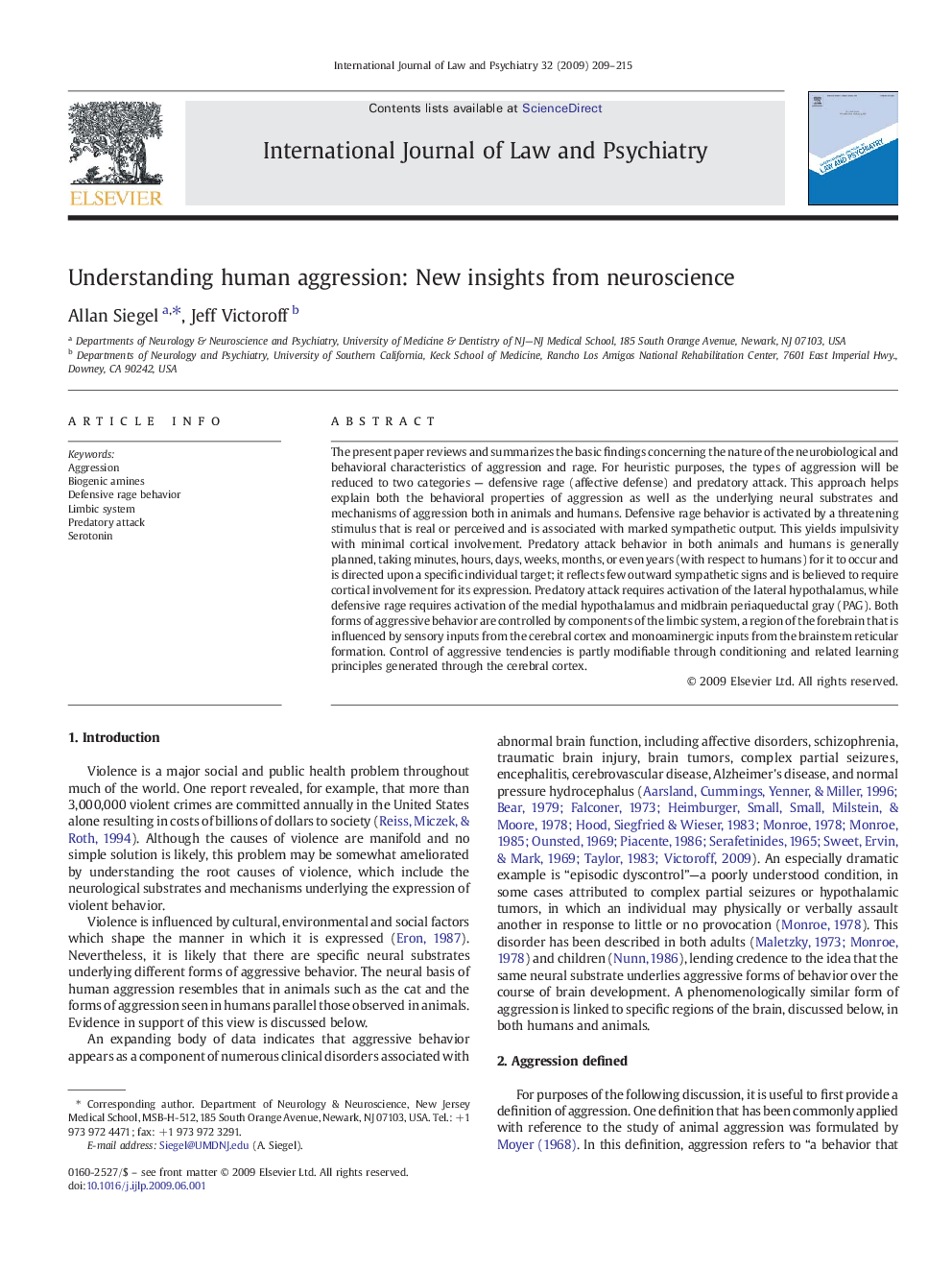| کد مقاله | کد نشریه | سال انتشار | مقاله انگلیسی | نسخه تمام متن |
|---|---|---|---|---|
| 101017 | 1422312 | 2009 | 7 صفحه PDF | دانلود رایگان |

The present paper reviews and summarizes the basic findings concerning the nature of the neurobiological and behavioral characteristics of aggression and rage. For heuristic purposes, the types of aggression will be reduced to two categories — defensive rage (affective defense) and predatory attack. This approach helps explain both the behavioral properties of aggression as well as the underlying neural substrates and mechanisms of aggression both in animals and humans. Defensive rage behavior is activated by a threatening stimulus that is real or perceived and is associated with marked sympathetic output. This yields impulsivity with minimal cortical involvement. Predatory attack behavior in both animals and humans is generally planned, taking minutes, hours, days, weeks, months, or even years (with respect to humans) for it to occur and is directed upon a specific individual target; it reflects few outward sympathetic signs and is believed to require cortical involvement for its expression. Predatory attack requires activation of the lateral hypothalamus, while defensive rage requires activation of the medial hypothalamus and midbrain periaqueductal gray (PAG). Both forms of aggressive behavior are controlled by components of the limbic system, a region of the forebrain that is influenced by sensory inputs from the cerebral cortex and monoaminergic inputs from the brainstem reticular formation. Control of aggressive tendencies is partly modifiable through conditioning and related learning principles generated through the cerebral cortex.
Journal: International Journal of Law and Psychiatry - Volume 32, Issue 4, July–August 2009, Pages 209–215